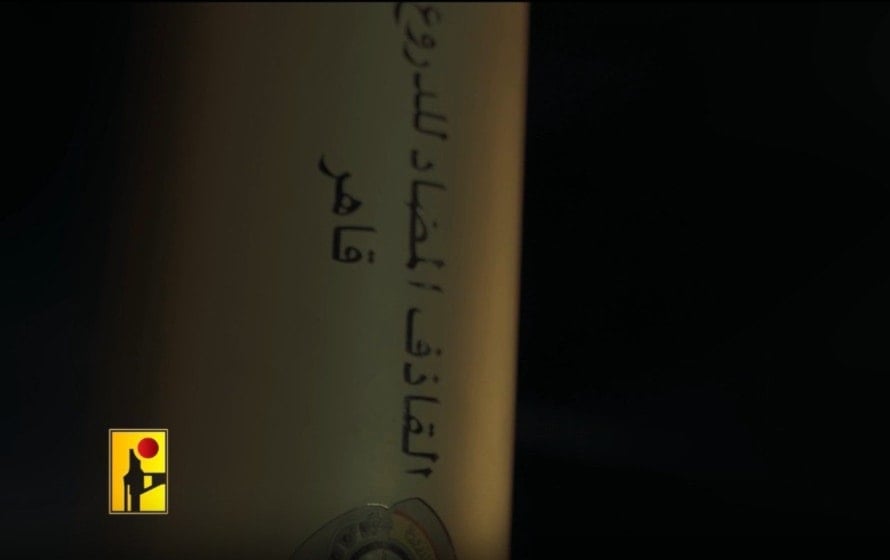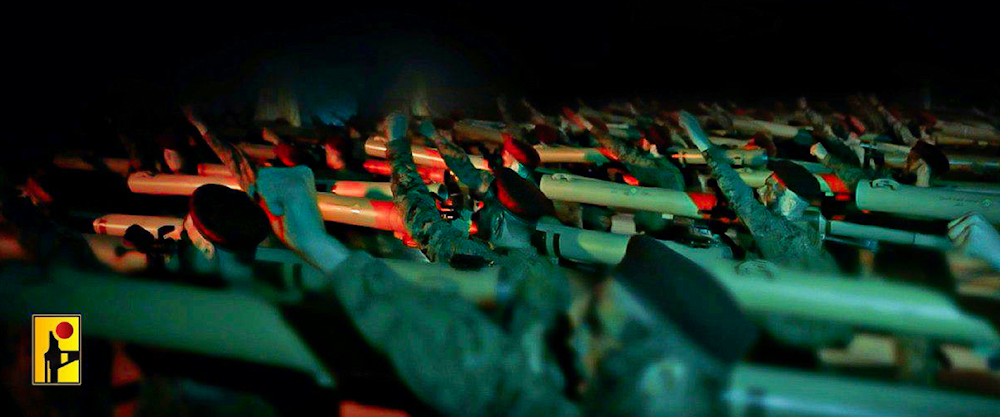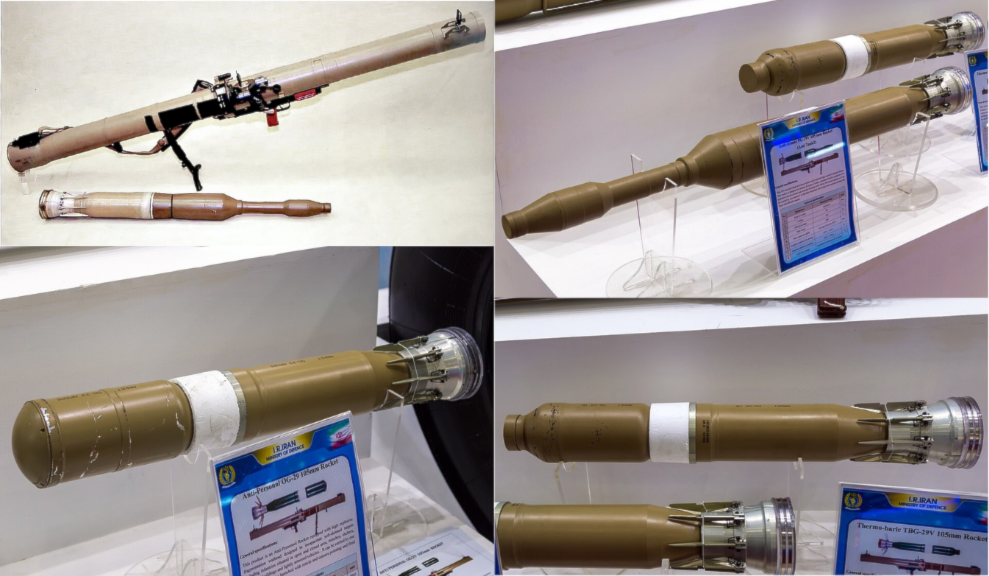Behind Hezbollah's video warning 'Israel' against Lebanon invasion
Hezbollah's Military Media Unit showcases multiple operations destroying Israeli Merkava tanks and dozens of fighters armed with the Qaher anti-tank shell.
-

Hezbollah anti-armor fighters stand next to dozens of anti-tank shells in a compound during a cinematic video, released as a threat to Israeli authorities, on July 22, 2024. (Islamic Resistance in Lebanon/Military Media)
The Islamic Resistance in Lebanon - Hezbollah released a video titled "You will have no tanks left" as a direct warning to the Israeli authorities and occupation forces, showcasing the Resistance's widespread anti-armor capabilities.
Multiple anti-tank guided missile systems and a shoulder-fired anti-tank shell were shown in the video, meant to remind the Israeli command of Hezbollah's advanced arsenal. It also showed Hezbollah's anti-amor forces utilizing the systems to score a number of destructive hits against Israeli Merkava tanks.
Hezbollah's ATGM battle-proven effectiveness
Some of the ATGM systems displayed in the video were the Tharallah twin missile system, the American-developed BGM-71 TOW system, 9M113 Konkurs, and variants of the Almas system.
Each of these missile systems has been used by the Resistance to successfully attack a flurry of Israeli targets since October 8, 2023.
الإعلام الحربي في المقاومة الإسلامية ينشر فاصلاً بعنوان "لن تبقى لكم دبابات"#الميادين #لبنان pic.twitter.com/eJItUMjfWs
— قناة الميادين (@AlMayadeenNews) July 22, 2024
The Almas missile system communicates to its operator a live feed of its flight, via a wired television camera, and takes a top-down trajectory. These features expand Hezbollah's anti-tank forces' field of vision to encompass a range of targets, exposing Israeli tanks and armored vehicles in hidden positions.
Almas' guidance system also allows for real-time highly-accurate guidance and pinpoint hits against various targets.
Hezbollah's Military Media featured the Tharallah system, a locally-modified ATGM System, that allows operators to fire two Kornet-type anti-tank missiles at a single target in tandem effect.
Both systems have been designed to overcome the Israeli Trophy active protection system, which works on protecting Israeli armored vehicles from a single incoming shell at a time.
As seen in the video, the last scene of an ATGM attack saw an Almas missile directly impact a Merkava tank, despite the attempted activation of the Trophy APS.
Hezbollah's Qaher, 2006 war on Lebanon
Not only did the video feature Hezbollah's ATGM capabilities, but it also dedicated a substantial section to the Resistance's shoulder-fired anti-tank shell, Qaher. The system is a replica of the Soviet-developed RPG-29 launcher, which can be armed with a variety of shells.
-

In Arabic: "The anti-armor launcher Qaher" is seen imprinted on an RPG-29-type launcher, in a video released on July 22, 2024. (Islamic Resistance in Lebanon/Military Media)
The unguided system has a shorter range than the aforementioned weapons, estimated at 500 m. However, the Resistance's success in multiple southern border villages, during the 2006 war on Lebanon, was attributed to the anti-tank shell.
Dozens of Hezbollah fighters were seen arming themselves in the video, positioning the Resistance's fighters, equipped with the Qaher launchers, directly against the world's most advanced main battle tanks, as the group's Secretary-General Sayyed Hassan Nasrallah's threat resonates in the background.
-

Hezbollah fighters armed with RPG-29 launchers perform a salute in a cinematic video released on July 22, 2024 (Islamic Resistance in Lebanon/Military Media)
In the midst of the 2006 war on Lebanon, which exposed the vulnerability of Israeli armored forces, Israeli military correspondent Ze'ev Schiff accredited Hezbollah's anti-armor units for their effective tactics in an article for Haaretz.
Citing Israeli intelligence sources, Schiff said that the majority of Israeli infantry and armored casualties were a direct result of Hezbollah's special anti-armor units.
At the time the RPG-29, or Qaher, was underscored as the main source of Hezbollah's effective firepower in Lebanon by Israeli media outlets.
"The RPG-29's penetrating power comes from its tandem warhead, and on a number of occasions has managed to get through the massive armor of the Merkava tanks," Ze'ev wrote.
In fact, Hezbollah anti-armor teams and sapper units were able to destroy beyond repair 20 Israeli Merkava tanks and severely damage another 40, according to Israeli sources.
The system has yet to be heavily deployed in current confrontations with Israeli occupation forces. Nonetheless, an Israeli ground invasion into South Lebanon would undoubtedly involve a significantly larger deployment of Qaher units, making the 2006 war appear as a minor skirmish by comparison.
More on Hezbollah's RPG-29 launcher
The RPG-29 launcher can be armed with three variants of rocket-propelled grenades, including the anti-tank tandem PG-29V shell, the thermobaric TBG-29V shell, and the anti-personnel OG-29 shell.
- The PG-29V round has both anti-tank and anti-bunker capabilities and a tandem 6 4mm/105 mm warhead design aimed at defeating enemy explosive reactive armor (ERA) and boosting armor penetration capabilities.
- The TBG-29V round contains a mixture of gas, liquid, or finely powdered explosives that upon impact create an aerosol cloud which consequently generates high temperatures and pressure upon ignition. It is especially effective when used against enemy troops in confined spaces.
- The OG-29 round's origins can be traced back to Iran and is composed of a high-explosive and fragmentation warhead, containing over 2,000 premade fragments.
-

The various shells of the RPG-29 system are seen in this illustration. (Wikipedia Commons)

 5 Min Read
5 Min Read








